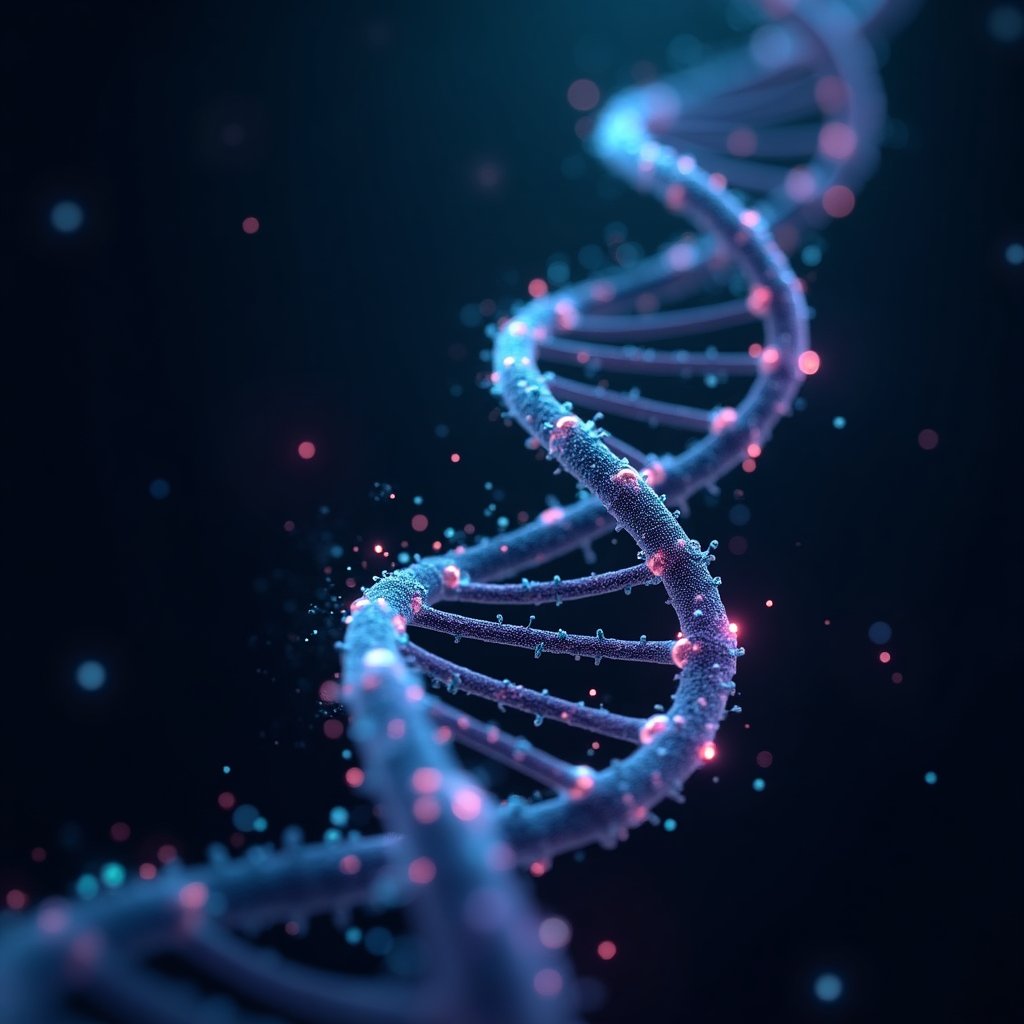Imagine a world where diseases are diagnosed before symptoms appear, where new materials for quantum computers are designed in minutes, and where doctors can interpret X-rays with the precision of a supercomputer. Sounds like science fiction, right? Well, thanks to groundbreaking AI research, this future is closer than you think. In this article, we’ll dive into the latest breakthroughs from AI Revolution, exploring how AI is transforming biology, materials science, and healthcare. Buckle up—this is the future of innovation, and it’s happening now.
AI Meets Biology: Decoding the Genome’s Dark Matter
Let’s start with a jaw-dropping project from Columbia University’s Vagelos College of Physicians and Surgeons. Researchers have developed an AI system that can predict gene activity in any human cell. Yes, any cell—normal or diseased. This isn’t just a fancy lab trick; it’s a game-changer for understanding how diseases like cancer develop.
Traditional biology has always been descriptive. Scientists observe what happens in a cell after it’s been affected by a mutation or disease. But this new AI model flips the script. It’s predictive. By analyzing data from over 1.3 million human cells, the AI can forecast how a cell will behave based on which genes are active. Think of it as reading the cell’s internal instruction manual before anything goes wrong.
Raul Rabadan, a professor of systems biology at Columbia, explains it best: “We’re learning the grammar of gene regulation.” Just like ChatGPT learns the grammar of human language, this AI learns the grammar of the genome. It understands how different pieces of DNA interact, how accessible they are, and how that influences gene expression. The result? The AI can predict gene activity in unfamiliar cell types—even diseased ones—with remarkable accuracy.
One of the first real-world applications of this technology is in pediatric leukemia. The AI predicted how a specific genetic mutation disrupts the interaction between two crucial transcription factors—proteins that tell the cell which genes to turn on or off. Lab experiments confirmed the AI’s prediction, paving the way for targeted therapies. This is biology 2.0, where AI isn’t just assisting—it’s leading the charge.
The Genome’s Dark Matter: A New Frontier
Here’s where it gets even more fascinating. Most of the human genome is what scientists call “dark matter”—vast stretches of DNA that don’t directly code for proteins. Yet, most cancer mutations occur in these regions. The AI model developed by Rabadan’s team can predict how changes in these dark regions affect gene expression, shedding light on previously unexplored areas of biology.
This research, published in Nature on January 8, 2025, marks the beginning of a new era. We’re no longer just describing biology—we’re predicting it. And that’s a seismic shift.
AI in Materials Science: Designing the Future
Now, let’s shift gears to materials science. If you’ve ever wondered why your phone battery doesn’t last longer or why electric cars still can’t match the range of gas-powered vehicles, the answer lies in materials. Developing new materials is a slow, expensive process—until now.
Enter Microsoft Research and their generative AI model, MatterGen. This AI is like a text-to-image generator, but for materials. Instead of sifting through millions of potential substances, researchers simply tell MatterGen what properties they want—say, a battery material that holds a charge for 24 hours and is stable at high temperatures. The AI then generates a blueprint.
In its first test, MatterGen’s generated material was within 20% of the target values. That’s astonishing for a first attempt. Imagine cutting years of trial and error down to a fraction of the time. Whether it’s better batteries for sustainable energy, superconductors for quantum computing, or specialized polymers for biomedical devices, this AI could revolutionize entire industries.
Tony Hey, from Microsoft’s AI for Science group in Cambridge, puts it perfectly: “Human history is driven by material innovation.” With AI accelerating materials discovery, we could see breakthroughs in energy, healthcare, and beyond. Think about it: new battery technology could make electric vehicles more affordable and efficient, while advanced superconductors could revolutionize medical imaging.
AI in Healthcare: Faster, Smarter Diagnoses
Finally, let’s talk about healthcare. Microsoft Research, in collaboration with the Mayo Clinic, has developed an AI system called RadDino. This tool is designed to enhance radiology by interpreting X-rays faster and more accurately than ever before.
RadDino isn’t just trained on images—it also reads radiology reports, identifying patterns and generating text that describes what it sees in an X-ray. This means doctors can spend less time reviewing images and more time focusing on complex decisions. For example, RadDino can flag subtle changes in a chest X-ray or detect misplaced tubes and lines in seconds.
In a hospital setting, this could be a game-changer. A new patient comes in, gets an X-ray, and within minutes, RadDino flags potential issues. Physicians get a concise summary and can decide on the best course of action without hours of manual analysis. In emergency situations, this could save lives.
Chris Bishop, Microsoft’s Research AI for Science Director, sums it up: “These models can learn the languages of molecules, proteins, and more, opening paths to faster drug discovery and disease diagnosis.”
The Bigger Picture: What Does This Mean for Us?
These breakthroughs aren’t just academic exercises—they’re shaping the future of humanity. AI is turning biology into a predictive science, accelerating materials discovery, and revolutionizing healthcare. But with great power comes great responsibility. Ethical concerns, data quality, and safety standards must be addressed as these technologies evolve.
So, what’s next? Will AI help us cure cancer, design the next generation of quantum computers, or even extend human lifespans? The possibilities are endless, and the journey has just begun.
Thought-Provoking Questions
- How do you think AI will impact your life in the next decade?
- What ethical concerns should we prioritize as AI becomes more integrated into healthcare and science?
- Could AI eventually design materials or drugs that humans haven’t even imagined?
We’d love to hear your thoughts! Join the conversation in the comments below and become part of the iNthacity community—the “Shining City on the Web.” Like, share, and let’s explore the future together.
Wait! There's more...check out our gripping short story that continues the journey: The Last Codex of Alexandria
Disclaimer: This article may contain affiliate links. If you click on these links and make a purchase, we may receive a commission at no additional cost to you. Our recommendations and reviews are always independent and objective, aiming to provide you with the best information and resources.
Get Exclusive Stories, Photos, Art & Offers - Subscribe Today!


























Post Comment
You must be logged in to post a comment.